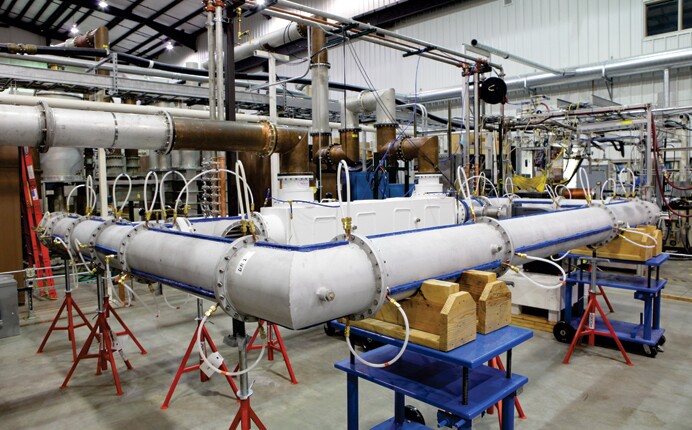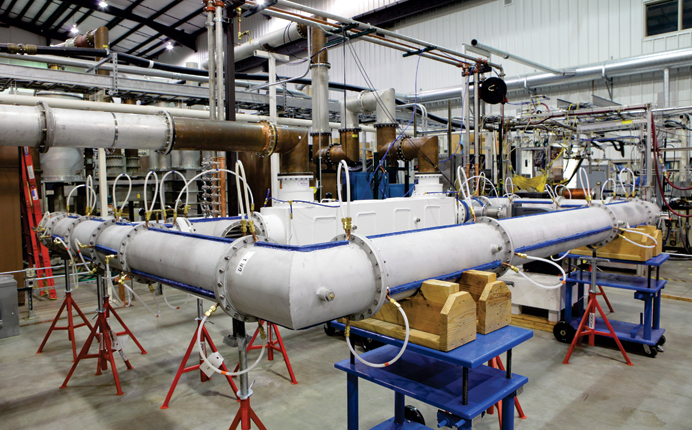Turmoil at ITER continues
DOI: 10.1063/PT.3.2413
In response to a blistering external review and congressional pressure for the US to end its participation in ITER, the international fusion test reactor being built in France, the project’s top official and governing council are scrambling to implement major management reforms.
Robert Iotti, the US-appointed chairman of the ITER Council, says that each of the 11 recommendations made by an independent management review team last year is being implemented. Those steps include replacing Osamu Motojima, the current director general of the central ITER Organization (IO), and cutting the number of senior managers there by half or more.
“The project is in a malaise and could drift out of control,” warned the review team’s executive summary, which was leaked to and published by the New Yorker. The team was headed by William Madia, former director of Oak Ridge and Pacific Northwest National Laboratories.
Motojima, who also says he agrees with all of the review team’s recommendations, will present his plan for streamlining the 565-employee IO to the ITER Council at a meeting this month. “When I came here in 2010, one of my biggest priorities was cost containment,” says Motojima. “I am pushing through dramatic changes in the structure, culture, and work processes of the ITER Organization.”
Improving interactions
Iotti, who became ITER council chairman this year, says a successor to Motojima will be selected by the end of 2014. The Madia committee called the ITER leadership “weak” and “lack[ing] a sense of urgency.” It had urged accelerating the selection process for a new director general.
Iotti reports that officials from the IO and representatives from the member states component design and manufacturing operations reached a consensus in early May on how to improve cooperation. “Clearly, the relationship between the ITER Organization and the domestic agencies needs to be put on a path where cooperation exists most of the time,” he says. The Madia committee had said that the IO staff, which will assemble the tokamak, should view their success as dependent on the domestic agencies’ success. “That has not been the case to date,” the report stated.
Senator Dianne Feinstein (D-CA), who chairs the appropriations subcommittee funding the Department of Energy, has threatened to delete the $150 million that the Obama administration requested for the US contribution to ITER for fiscal year 2015 (see Physics Today, May 2014, page 23

This test stand at Oak Ridge National Laboratory will demonstrate that a US contribution of large-scale 12-inch coaxial transmission lines for ITER’s ion cyclotron heating system can perform to specifications.
ITER ORGANIZATION

Impatience in the Senate
Iotti expressed disappointment after meeting with Senate appropriations staff on 5 May; he said they appeared unwilling to accept that the reforms will take time to implement. Many of the recommendations require lengthy series of multiple actions, and some won’t be fully implemented until mid 2015. “They didn’t seem to be particularly willing to understand that explanation,” he says. He found no similar impatience in meeting with House appropriators.
A Senate source says that while Feinstein hasn’t made up her mind, she remains skeptical about whether the IO can make the necessary reforms at reasonable cost and in a timely fashion. Many of the same management issues had been raised in a 2011 management review conducted by an Indian team.
“The difference is the attitude of the council has changed,” Iotti says. “They’re going to do something about it.” The Madia committee urged the council to “start acting like the board of directors that you are on this project: Take action,” Iotti says. “This time they took it seriously.”
Unlike the two directors general to date, the next won’t necessarily be Japanese, Iotti says. Japan was given the right to name the first director general as consolation for losing the competition for the ITER site to the European Union. Motojima, the second to serve, was appointed after the partners agreed to extend Japan’s privilege. Motojima says he has sometimes been prevented from appointing the most qualified individuals to key posts at the IO without regard to nationality. But Iotti says Motojima has had that ability; he just hasn’t always been willing to resist political pressures.
US demands accepted
Feinstein and the Madia committee both were highly critical of the absence of a baseline schedule. The last estimate, for a 2019 completion date, was set in 2008, but it is widely acknowledged that a more realistic date will be around 2023. Iotti says it will take until mid 2015 to establish the baseline schedule. A new cost estimate will accompany the schedule, to be stated in “ITER units of account,” a virtual currency. Since the vast majority of contributions from the project partners are to be made in kind, each nation must calculate the value of its contribution in its own currency.
With a 9.1% stake in ITER, DOE has produced cost estimates for its contribution alone that range from $3.9 billion to $6.5 billion. The disparity is mainly attributable to contingency amounts (see Physics Today, February 2014, page 20
Realistic and blunt
Deputy Secretary of Energy Daniel Poneman told Feinstein on 9 April that DOE had stated “very bluntly and very clearly that we need to respond and the international organization running the ITER project has to respond to all of those management assessment recommendations, has to come up with an action plan, and has to execute.” Poneman joined Moniz at the Senate hearing because Moniz has recused himself from fusion matters. Moniz was previously a physics professor at MIT, which is a DOE fusion-program contractor.
The Obama administration has capped the US annual contribution to ITER at $225 million, but it has never come close to including that much in a budget request. Congress appropriated $199 million for ITER in fiscal year 2014. Edmund Synakowski, associate director of fusion energy sciences at DOE’s Office of Science, told an advisory committee in April that the $150 million requested for ITER in FY 2015 was appropriate in view of the lack of a baseline schedule. But Ned Sauthoff, director of the US ITER Project Office, told the same meeting that next year’s request will cause the project schedule to slip further.
Iotti says the ITER project needs to “demonstrate substantial real progress by the middle of 2015; then the project is not only salvageable but will be successful.” At that point, components will start to show up at the site, buildings will be constructed, and, he says, “people will start to think differently, thinking that this is actually going to happen.”
More about the Authors
David Kramer. dkramer@aip.org




